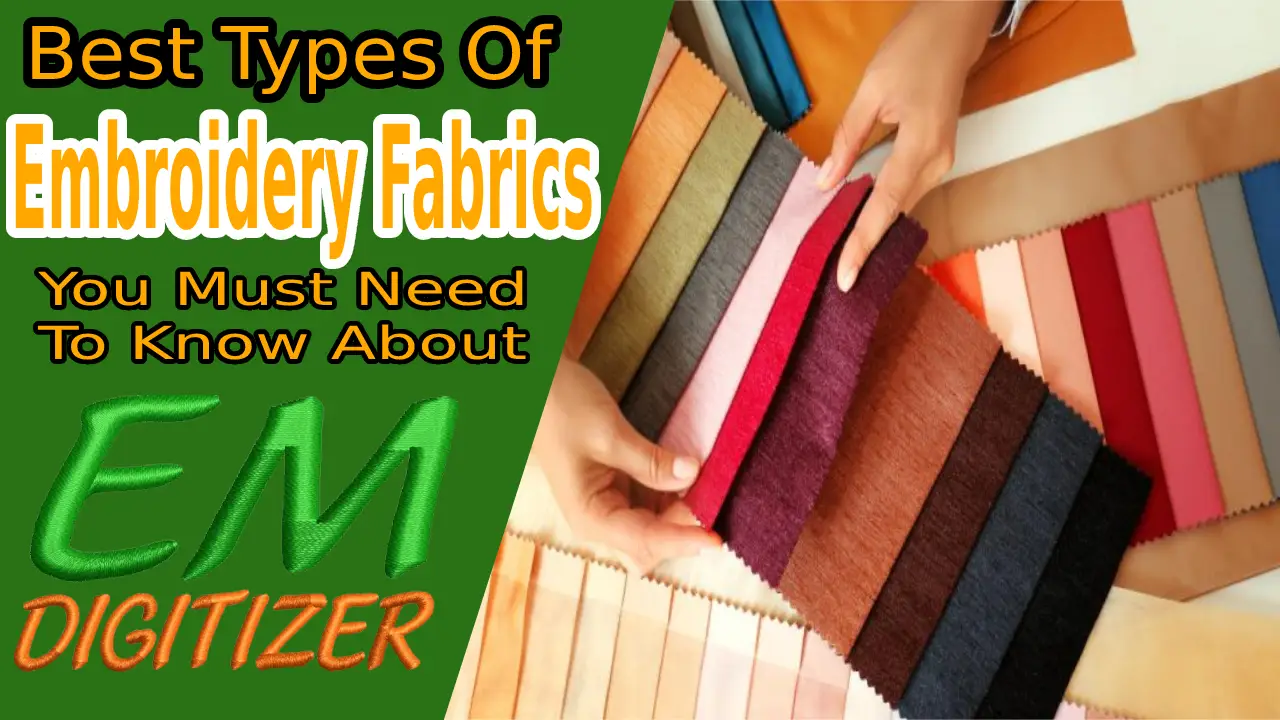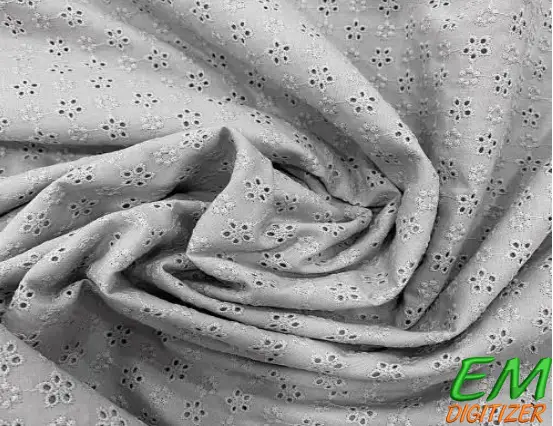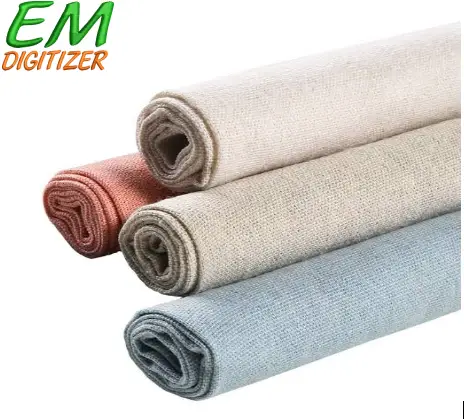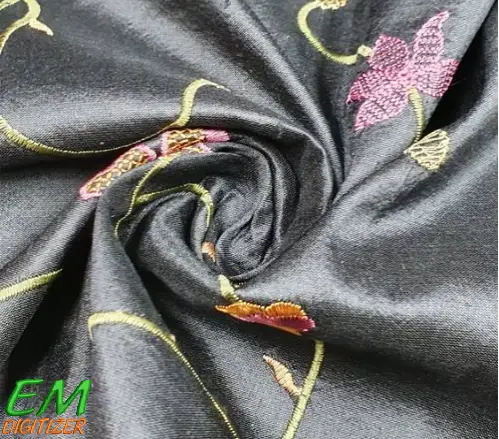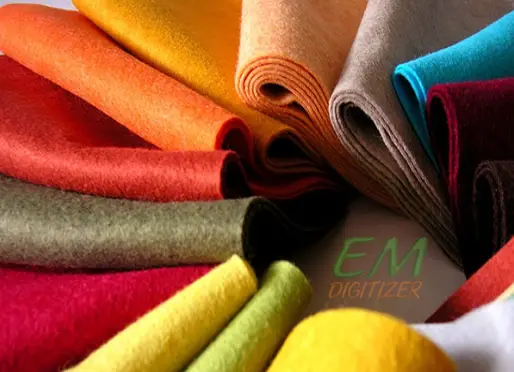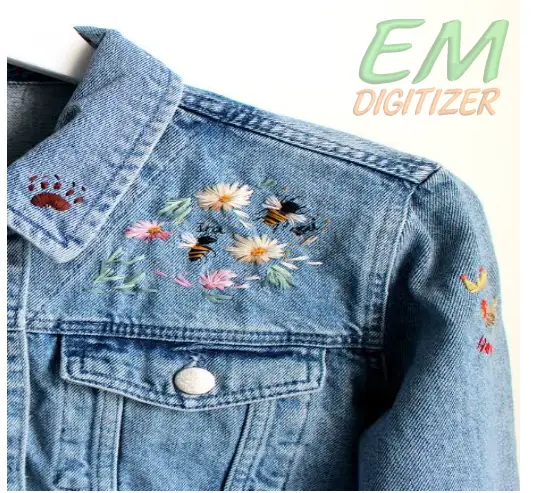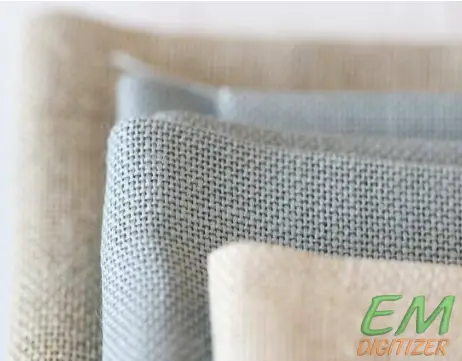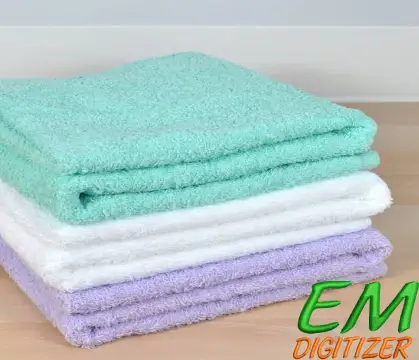The beauty of embroidery is all about how your fabric carries the design. Embroidery fabrics are one of the essential supplies. A question can arise in everyone’s mind which fabric should be used to embroider? One can get stuck in the choice of fabrics. As there are a lot of online and offline fabric stores which provide you with high-class embroidery fabrics that differ in thickness but it’s your choice to select the best fabric which supports your embroidery design.
Table of Contents
ToggleHere you will find the best embroidery fabrics that influence your results of various embroidery projects. But before this, you need to consider important factors to buy fabric for your embroidery.
Embroidery Digitizing Services
If you are looking for embroidery digitizing services, EMDigitizer is one of the best embroidery digitizing companies. Providing all types of embroidery digitizing Services. I recommend you try digitizing services.
Order NowGet Free QuoteImportant Tips To buy Embroidery Fabrics
You can use any kind of fabric material through which your needle can easily pass out to stitch a design. But it depends upon the complexity of your design. Only some of the embroidery designs can be formed on all of the fabrics. E.g, a complex design will embroider on stiff fabrics. Here are the tips you need to follow while purchasing embroidery fabrics of your choice.
Tip01: Consider the Weight Of the Fabric
Lightweight fabrics aren’t suitable for embroidery because when you start to embroider on such fabric, wrinkles will appear on it. You are advised to use a medium-weight embroidery fabric that withstands the tension of stitches.
Tip02:Choose Fabric That Is Cost Friendly
You are recommended to choose the fabric that is strong enough to support your stitching and it must be cost-friendly. If you are new to embroidery, try using simple and low-budget fabrics for practice but they should be of good quality. You can pick different fabrics in pieces to see which will go best with your embroidery.
Tip03:Fabric For Embroidery On Pillows
If you are looking for embroidery on pillows and other articles of clothing, you are advised to use medium-weight embroidery fabrics that should not be too slippery and too tightly.
Types Of Fabrics Used In Embroidery
Embroiders pay keen attention instead of a mere look when selecting embroidery fabrics. Because the durability of embroidery that lasts for decades only depends on the quality of the fabrics.
Out of a large number of available fabrics, here’s the list of the best types of embroidery fabrics to beautify your embroidery design.
Woven Fabrics And It’s Categories
Such types of natural embroidery fabrics go best with surface embroidery because needles can easily pass out from these fabrics. Common fibre content including cotton, silk and wool etc. It also comes in an array of materials such as muslin, linen and canvas.
Cotton
It is stretchable, moisture-absorbent and heat-resistant embroidery fabric. Its 100% cotton is deprived of human chemicals and hence natural. These embroidery fabrics are suitable for embroidering shirts, aprons and handkerchiefs. If we talk about jersey fabric, it is also the combination of cotton wool and synthetic fabric that makes it the best choice for embroidery. A cotton blend with polyester is also a great pick for embroidered t-shirts. Other categories are cotton lawn, cotton poplin or quilt-weight cotton fabric. Among all, quilting-weight cotton holds the best stitching and prevents it from snagging.
Linen
It is one of the best choices for both hand and machine embroidery fabrics. Linen is the most suitable and reliable option for carrying embroidery due to its composition and hardness. Comes in the form of linen canvas with a loose thread count and its hard thread count is for clothing. This embroidery fabric with plain and even weave texture adds value to the embroidered projects and hence lighter fabric too. These embroidery fabrics are easily available in most craft stores and on Amazon. Linen can be used as linen blends that come in a bunch of colours. The linen of 19-count to 36-thread count is best for embroidery. Be aware when shopping for fabric from local fabric stores as they also sell uneven weave linen which can be tricky to deal with.
Silk
As you know, silk fabric is extracted from insects and is the best-known embroidery fabric. An outstanding feature is their thread count ranges between 600counts. Silk also has a moisture-wicking ability. It provides a strong base during embroidery and is suggested by most embroiderers for clothing but can be a little expensive. Some silk fabrics are light weighted and you need to use backing for strength and to hide the stitching often shown beneath the surface during stitching.
Felted Or Woven Wool
Other types of embroidery fabrics include felt or wool. Such wool does not fray during embroidery, which makes it the best choice among embroiderers. Wool is commonly worn during cold weather as it traps heat and absorbs moisture.
You can also use felt fabrics for testing of embroidery design as it provides complete depth. Wool embroidery fabrics don’t stretch and are best with crewel and applique embroidery. Moreover, you can use felt wool to embroider gift projects and ornament purposes.
Denim
It is purely made up of 100% cotton that you often see in the form of embroidered jackets, jeans and shirts that never go out of style. Such types of embroidery fabrics are available in a variety of colours to make your embroidery beautiful. Denim patches are useful for repairing worn fabrics. Denim goes well with straight stitch and crewel stitch with the use of a heavier needle to pass out from the fabrics. It doesn’t stretch and this feature allows your designs to stand out.
Evenweave Fabrics
It is one of the great choices as embroidery fabrics to carry out embroidery and is more refined in look. This type of fabric has an equal or the same thread number per inch both horizontally and vertically with the same thickness. You can carry out even cross-stitch patterns without any deformation. This type of embroidery fabric comes in a variety of colours and thread counts. Maximum thread count ranges from 25-32 counts. Evenweave fabrics are mainly composed of cotton, linen, rayon or polyester blends. Due to its flexibility and stiffness, it falls between Aida and linen fabrics. So, it is a better choice for embroidering complex designs. You are advised to wash the fabric before embroidering to avoid shrinkage.
Aida Fabrics
Aida fabrics are of great importance as embroidery fabrics when you are going to perform cross-stitching. Its square pattern makes it easy for counting stitches especially for beginners because of the hole in the fabric and reflects a trendy look. Here the count means the number of squares per inch of fabric. It is available in a wide range of solid colours with printed and textured backgrounds due to this reason Aida fabrics are used widely. Their fibre content also can be linen, cotton or rayon with thread count ranging from 7 to 28 count. You are advised to wash it to close the remaining spots that are left open after stitching.
Hardanger Fabrics
Hardanger fabric is a kind of evenweave fabric that is pure of cotton with 22-count with a high percentage of linen, rayon, wool and flax etc. As woven with double thread, each count results in a count of 11 squares per inch. Strongly suggested embroidery fabrics for bulk embroidery, cut work and cross stitching. But the drawback is the limited selection of colours. Such embroidery fabrics are reliable for whitework embroidery. It is useful for filing details of the design with depth as it is white. So you can embroider on any cloth and design of your choice according to the layout and colour of the clothes.
Terry Clothes Or Toweling
It is also considered the best type of embroidery fabric to use with cotton fibre content. They absorb most of the water. Such types of embroidery fabrics are used to exhibit a fluffy effect in the case of embroidering decorative pieces and monograms.
Conclusion
Embroidery is a delicate process and most people prefer to embroider their personalized items as well. One should be very careful when selecting embroidery supplies. Embroidery fabrics are one of the important tools of an embroidery kit. When embroidering clothes, you need to consider their weight, and thickness and some of the fabrics are too stretchy to deal with.
The choice of embroidery fabrics depends upon the type of design you are going to embroider. Try to choose a fabric that is neither thin nor too hard. From the above-given list, you can easily select which type of embroidery fabric goes well with your embroidery projects. Hopefully, this article enables you to make the best choice of embroidery fabrics.
The most frequently used fabrics for embroidery are linen, cotton, Aida fabrics, evenweave fabrics, wool, denim, silk etc.
Fabrics with thread count 28-32 are easily available in craft stores. You can choose which fabrics go best according to the complexity of your embroidery design.
By fibre weave(as high quality has an equal combination of horizontal and vertical weave).
Fibre colour(poor quality fabric show uneven spots or streaks)
Thread count(more the thread count, the higher the durability)
Similarity– Both fabrics are used for Cross stitch embroidery.
Difference- In Aida fabrics, you will count squares per inch but with evenweave fabrics, you will count thread numbers.
If you have any questions leave the comments or you can visit our social channels for more updates regularly. We provide embroidery digitizing services if you need digitizing services feel free to contact us or email us.

